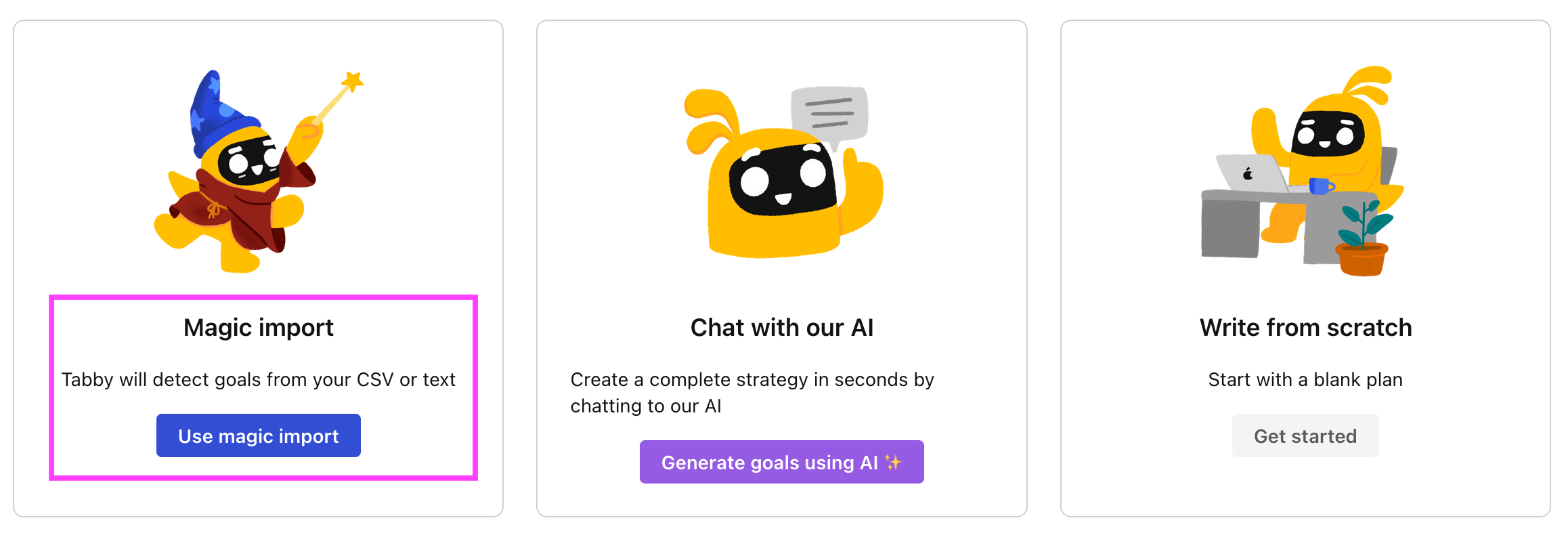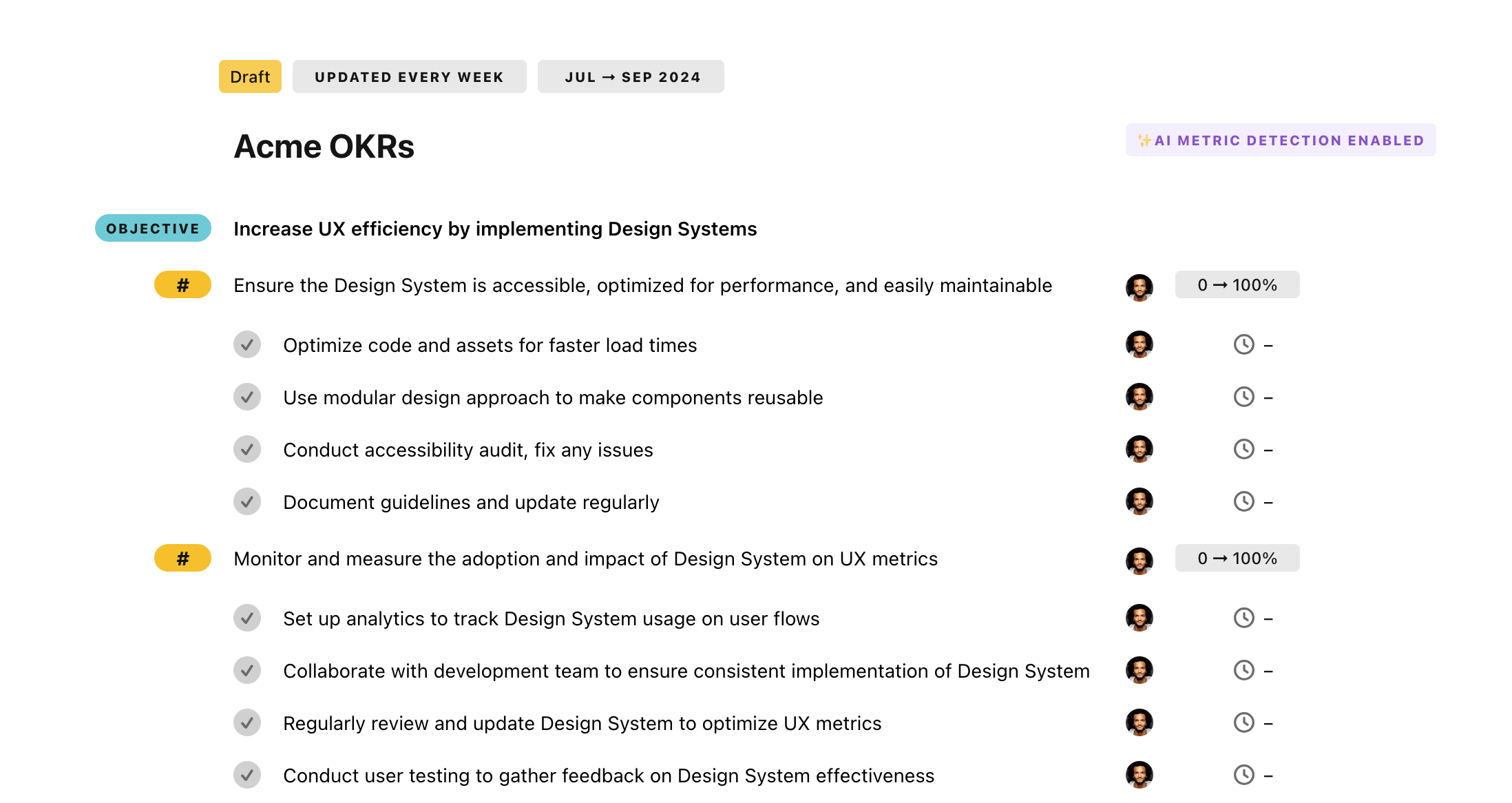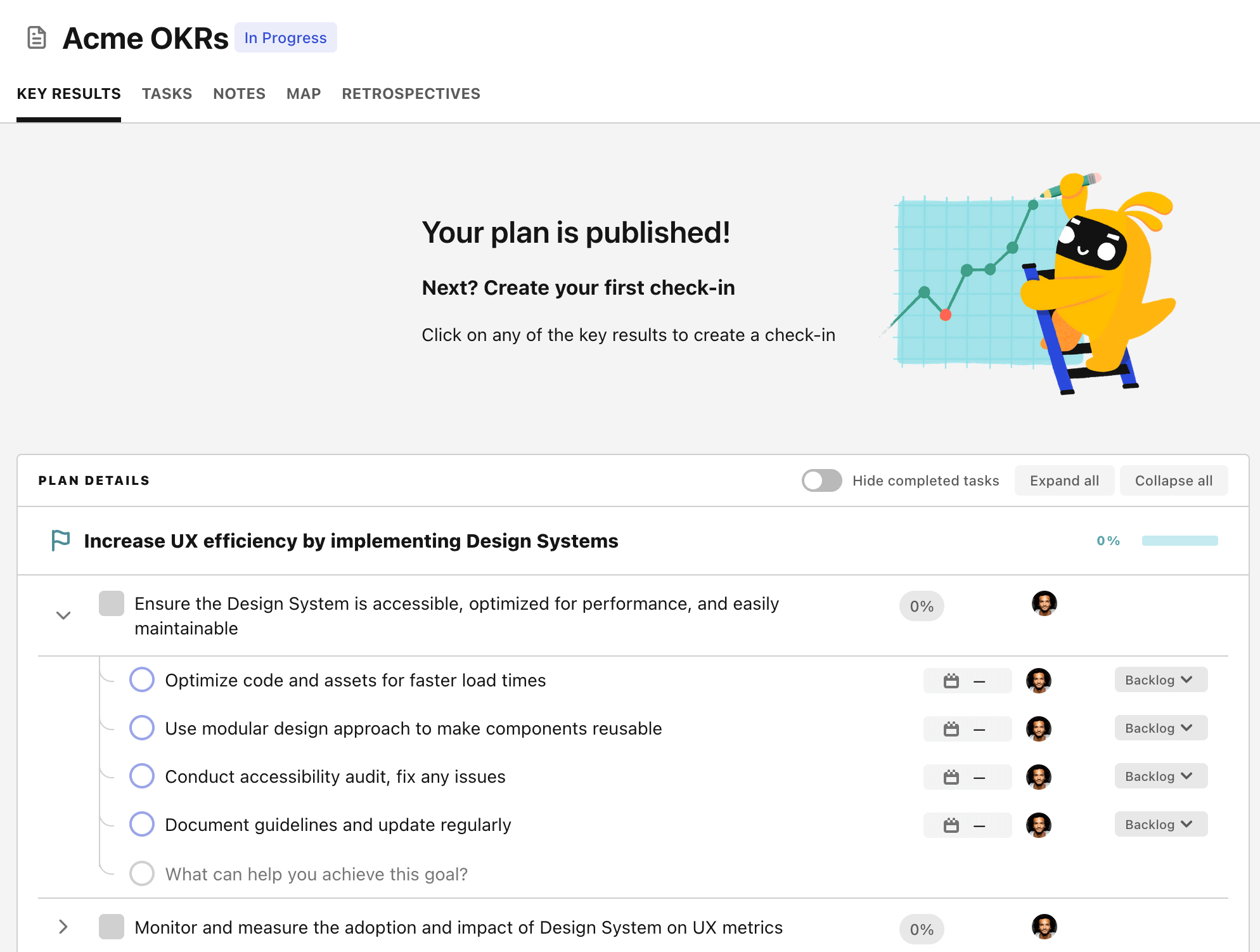OKR template to enhance leadership meeting efficiency and departmental accountability via OKRs
Your OKR template
The first objective is to reach a 75% OKR completion rate across all departments for improved performance. This requires routine OKR training sessions, a sophisticated tracking system for OKR progress, and improved communication on OKR benefits.
The second objective is to implement a structured weekly leadership meeting by the end of the month. The initiatives towards achieving this involves setting up a protocol for pre-meeting preparation, developing an agenda for these meetings, and allocating specific time slots for different topics.
The third objective is to increase inter-departmental projects by 20% to encourage cross-functional accountability. This goal can be achieved by organizing regular cross-department team-building activities, initiating inter-departmental project proposals, and devising strategies for cross-departmental collaboration.
ObjectiveEnhance leadership meeting efficiency and departmental accountability via OKRs
KRAchieve a 75% OKR completion rate across all departments for improved performance
Implement regular OKR training sessions across all departments
Develop better tracking systems for OKR progress
Improve communication about OKR importance and benefits
KRImplement a streamlined weekly leadership meeting structure by month end
Establish protocol for pre-meeting preparation
Develop an agenda for weekly leadership meetings
Allocate specific time slots for each topic
KRIncrease inter-departmental projects by 20% to promote cross-functional accountability
Organize regular cross-department team building activities
Initiate inter-departmental project proposals
Develop cross-departmental collaboration strategies
How to edit and track OKRs with Tability
You'll probably want to edit the examples in this post, and Tability is the perfect tool for it.
Tability is an AI-powered platform that helps teams set better goals, monitor execution, and get help to achieve their objectives faster.
With Tability you can:
- Use AI to draft a complete set of OKRs in seconds
- Connect your OKRs and team goals to your project
- Automate reporting with integrations and built-in dashboard
Instead of having to copy the content of the OKR examples in a doc or spreadsheet, you can use Tability’s magic importer to start using any of the examples in this page.
The import process can be done in seconds, allowing you to edit OKRs directly in a platform that knows how to manage and track goals.
Step 1. Sign up for a free Tability account
Go tohttps://tability.app/signup and create your account (it's free!)
Step 2. Create a plan
Follow the steps after your onboarding to create your first plan, you should get to a page that looks like the picture below.

Step 3. Use the magic importer
Click on Use magic import to open up the Magic Import modal.
Now, go back to the OKR examples, and click on Copy on the example that you’d like to use.

Paste the content in the text import section. Don’t worry about the formatting, Tability’s AI will be able to parse it!

Now, just click on Import from text and let the magic happen.

Once your example is in the plan editor, you will be able to:
- Edit the objectives, key results, and tasks
- Click on the target 0 → 100% to set better target
- Use the tips and the AI to refine your goals
Step 4. Publish your plan
Once you’re done editing, you can publish your plan to switch to the goal-tracking mode.

From there you will have access to all the features that will help you and your team save hours with OKR reporting.
- 10+ built-in dashboards to visualise progress on your goals
- Weekly reminders, data connectors, and smart notifications
- 9 views to map OKRs to strategic projects
- Strategy map to align teams at scale